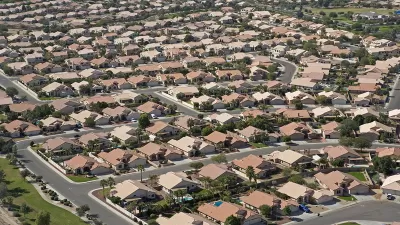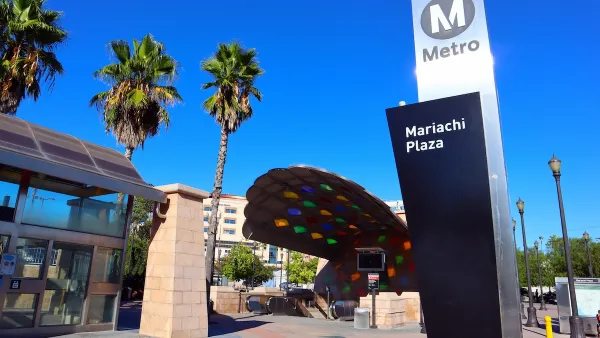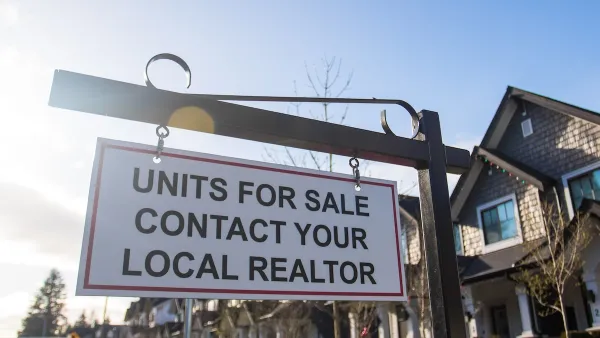What's so special about single-family homes that we'd rather preserve them than prevent the displacement and financial distress of thousands of low- and moderate-income renters?
As everyone knows by now, quite a few American cities—downtowns in particular—are doing really well. That's great news, but it hasn't come without some cost. Chief among those costs is a growing concern about increasing unaffordable housing and the displacement that often accompanies it. That is to say, gentrification. Though its fundamental causes are often misunderstood and misattributed, gentrification is nonetheless a serious issue. It's also an issue that, judging by the lack of any meaningful solutions after several decades of trying, is quite difficult to solve.
While I've argued in the past that gentrification (and rapid growth in general) is somewhat inevitable in many neighborhoods, what I didn't talk about is what those neighborhoods tend to look like. Specifically, that those neighborhoods are usually disproportionately represented by renters, not homeowners. (And middle-class gentrifiers who moved in two years ago complaining about the upper-middle-class gentrifiers who moved in two weeks ago.)
And its this focus on rental neighborhoods that's the paradox of gentrification to me. Most cities have thousands upon thousands of acres of land devoted solely to single-family homes, maybe with some duplexes here and there, usually with 6-8 homes per acre. Much of that land is very conveniently adjacent to major job centers and amenities (think Wallingford in Seattle, Boyle Heights in Los Angeles). Most of the homes on that land are owned by their residents. Yet when we choose where we're going to allow new density (and where we'll build new transit infrastructure) we focus it in the neighborhoods with the largest share of people who won't benefit financially—renters living on the edge of affordability lose, absentee property owners win. With outcomes like that, it's not surprising that many people feel so negatively about developers and new construction.
Now, I sincerely believe there are other benefits to increasing density, like the range of new cultural, food, and entertainment options that usually accompany concentrated groups of people. I also think new developments need to go somewhere, because choosing not to build housing doesn't stop people from finding your city a desirable place to live—it just means more people bidding over fewer homes. And it's completely sensible to maximize the return on public investments like subways and bus rapid transit by allowing as many people as possible to live and work near those resources. But there are quite a few low-density, mostly single-family neighborhoods and parts of neighborhoods that are also very conveniently located, and they're completely off-limits to new development. In many cases, even new buildings as low-key and unobtrusive as accessory dwelling units (or "granny flats") are prohibited or prohibitively over-regulated.
And the sad thing is that if those neighborhoods were opened up to some meaningfully higher level of development—that is, given the opportunity, not forced—homeowners would be in a position to gain in a way that renters can't. Gentrification would be a meaningless term in these places, because any increase in value would equate to increased wealth for residents.
There would be challenges with parking, views, and privacy, among other things, but they'd be the same challenges you find in every growing neighborhood, regardless of who owns the buildings. And whatever issues homeowners must contend with in a developing area, renters must contend with that plus increasingly unaffordable housing. What's so special about single-family homes that we'd rather preserve them than prevent the displacement and financial distress of thousands of low- and moderate-income renters?

Maui's Vacation Rental Debate Turns Ugly
Verbal attacks, misinformation campaigns and fistfights plague a high-stakes debate to convert thousands of vacation rentals into long-term housing.

Planetizen Federal Action Tracker
A weekly monitor of how Trump’s orders and actions are impacting planners and planning in America.

In Urban Planning, AI Prompting Could be the New Design Thinking
Creativity has long been key to great urban design. What if we see AI as our new creative partner?

King County Supportive Housing Program Offers Hope for Unhoused Residents
The county is taking a ‘Housing First’ approach that prioritizes getting people into housing, then offering wraparound supportive services.

Researchers Use AI to Get Clearer Picture of US Housing
Analysts are using artificial intelligence to supercharge their research by allowing them to comb through data faster. Though these AI tools can be error prone, they save time and housing researchers are optimistic about the future.

Making Shared Micromobility More Inclusive
Cities and shared mobility system operators can do more to include people with disabilities in planning and operations, per a new report.
Urban Design for Planners 1: Software Tools
This six-course series explores essential urban design concepts using open source software and equips planners with the tools they need to participate fully in the urban design process.
Planning for Universal Design
Learn the tools for implementing Universal Design in planning regulations.
planning NEXT
Appalachian Highlands Housing Partners
Mpact (founded as Rail~Volution)
City of Camden Redevelopment Agency
City of Astoria
City of Portland
City of Laramie






























